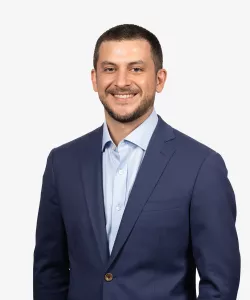Supreme Court Leaves Trademark Tacking in Hands of Jury
In a succinct eight-page opinion, the Supreme Court ruled unanimously last week that trademark “tacking” is a question of fact that should generally be decided by juries. The decision in Hana Financial, Inc., v. Hana Bank & Hana Financial Group resolved a split among the federal appellate courts and marked the first time in 10 years that the Supreme Court issued a substantive ruling on trademark law.
Background
Generally, the first party to use a trademark in commerce owns it. This is known as “priority” in a trademark. However, trademark law also has a doctrine known as “tacking,” in which a party can “tack” the use of an older mark onto a new mark for the purposes of determining priority. Thus, if a party makes minor changes to a trademark, the party can continue to claim priority in the mark even if the current version of the mark differs slightly from the way the mark was originally used. In order for the tacking doctrine to apply, however, the marks must be so-called “legal equivalents.” In order to be considered legal equivalents, the marks must create the same “commercial impression” and cannot differ materially from one another.
The federal appellate courts have disagreed whether judges or juries should decide if two marks are “legal equivalents.” The Federal and Sixth Circuits have held that “legal equivalency” is a question of law that should be decided by judges. Other circuits have found the question to be a question of fact, or mixed fact and law, and therefore a proper decision for juries. The question is important to brand owners and trademark lawyers because the answer to the question impacts the type of evidence that trademark owners can introduce to prove the equivalence of their tacked trademarks.
For additional background on the facts of this case, please see our previous client alert on the subject.
The Decision
Despite the circuit court split, the Supreme Court did not appear to wrestle with this question. The Court noted that “when the relevant question is how an ordinary person or community would make an assessment, the jury is generally the decisionmaker that ought to provide the fact-intensive answer.” In this case, because the question of whether trademarks are legal equivalents depends on the “commercial impression” of the marks, and because commercial impression is determined from the impression of an “ordinary purchaser,” the jury is the ideal factfinder.
The Court also easily dismissed various arguments that tacking should be determined by judges, noting that just because tacking is a “mixed question” of law and fact, does not mean it must be resolved by judges. Rather, the fact that it is a mixed question simply highlights the importance of careful jury instructions that make the legal standard clear. The Court also noted that the fact-intensive question of trademark tacking is little different from the fact-intensive inquiries that juries make routinely in other contexts, such as tort and criminal law cases.
Significance
This decision means that brand owners and their lawyers will generally continue to make their case to juries when litigating questions of trademark tacking. That means that evidence such as consumer perception surveys and expert witnesses will still play a central role in these cases.
Contacts
- Related Industries
- Related Practices
-
Read Time
3Minutes



